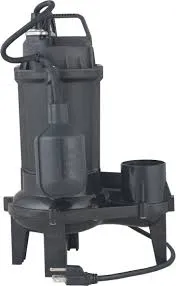English
- Afrikaans
- Albanian
- Amharic
- Arabic
- Armenian
- Azerbaijani
- Basque
- Belarusian
- Bengali
- Bosnian
- Bulgarian
- Catalan
- Cebuano
- Corsican
- Croatian
- Czech
- Danish
- Dutch
- English
- Esperanto
- Estonian
- Finnish
- French
- Frisian
- Galician
- Georgian
- German
- Greek
- Gujarati
- Haitian Creole
- hausa
- hawaiian
- Hebrew
- Hindi
- Miao
- Hungarian
- Icelandic
- igbo
- Indonesian
- irish
- Italian
- Japanese
- Javanese
- Kannada
- kazakh
- Khmer
- Rwandese
- Korean
- Kurdish
- Kyrgyz
- Lao
- Latin
- Latvian
- Lithuanian
- Luxembourgish
- Macedonian
- Malgashi
- Malay
- Malayalam
- Maltese
- Maori
- Marathi
- Mongolian
- Myanmar
- Nepali
- Norwegian
- Norwegian
- Occitan
- Pashto
- Persian
- Polish
- Portuguese
- Punjabi
- Romanian
- Russian
- Samoan
- Scottish Gaelic
- Serbian
- Sesotho
- Shona
- Sindhi
- Sinhala
- Slovak
- Slovenian
- Somali
- Spanish
- Sundanese
- Swahili
- Swedish
- Tagalog
- Tajik
- Tamil
- Tatar
- Telugu
- Thai
- Turkish
- Turkmen
- Ukrainian
- Urdu
- Uighur
- Uzbek
- Vietnamese
- Welsh
- Bantu
- Yiddish
- Yoruba
- Zulu
Telephone: +86 13120555503
Email: frank@cypump.com
Aug . 19, 2024 18:46 Back to list
Understanding the Working Principle of Mixed Flow Pumps and Their Applications
Working Principle of Mixed Flow Pumps
Mixed flow pumps are an essential component in various industrial applications, particularly in the field of water management, chemical processing, and HVAC systems. Understanding the working principle of mixed flow pumps is crucial for optimizing their performance and ensuring efficient operation.
Basic Definition and Design
A mixed flow pump is a mechanical device designed to move fluids through the transfer of mechanical energy. It combines characteristics of both centrifugal and axial flow pumps. In centrifugal pumps, the energy is imparted primarily through centrifugal force, while in axial flow pumps, the fluid moves parallel to the pump shaft. Mixed flow pumps, as the name suggests, merge these two flow methods, allowing for flexibility in various pumping scenarios.
Components of Mixed Flow Pumps
The primary components of a mixed flow pump include the impeller, volute, casing, and inlet/outlet connections. The impeller is the heart of the pump, usually having a series of blades that rotate around a central axis. As the impeller spins, it imparts kinetic energy to the fluid, causing it to move from the inlet towards the outlet. The volute and casing help to direct the flow and convert kinetic energy into pressure, which is vital for the effective delivery of the fluid.
Operating Principle
The operation of a mixed flow pump can be understood in several stages
1. Fluid Entry As the pump operates, the fluid enters through the inlet and flows into the eye of the impeller. Due to the design of the impeller, this initial entry phase is crucial, as it sets the stage for how efficiently the pump can function.
mixed flow pump working principle

2. Energy Transfer Once inside the impeller, the fluid is accelerated due to the rotational motion of the blades. The blades are designed to push the fluid both radially outwards and axially along the shaft, resulting in a mixed flow pattern. This dual action allows the pump to achieve a higher head, making it suitable for applications requiring both pressure and flow rate.
3. Volute Conversion After exiting the impeller, the mixed flow enters the volute casing. Here, the design helps convert the kinetic energy of the moving fluid into pressure energy. The gradually expanding area within the volute reduces the velocity of the fluid while increasing its pressure, effectively translating the dynamic energy imparted by the impeller into usable pressure at the outlet.
4. Fluid Discharge Finally, the fluid exits the pump through the discharge outlet. The design of the mixed flow pump ensures that the fluid is delivered at the desired pressure and flow rate, making it ideal for numerous applications.
Advantages of Mixed Flow Pumps
Mixed flow pumps offer several advantages over other types of pumps. They can operate efficiently over a wide range of flow rates and heads, making them versatile for different applications. Their ability to handle varying fluid viscosities and solid particles also adds to their robustness in industrial environments. Furthermore, mixed flow pumps typically feature a compact design, which allows for easy installation in limited spaces.
Applications
Mixed flow pumps are widely used in irrigation systems, wastewater treatment plants, and fire protection systems. They are also prevalent in cooling systems for power plants and industrial processes, where reliable fluid transport is crucial for maintaining operational efficiency.
In conclusion, the working principle of mixed flow pumps, based on the combination of centrifugal and axial flow mechanisms, provides significant advantages in various pumping applications. Their unique characteristics allow for efficient, reliable performance, making them a popular choice in many industries. Understanding their design and operation is essential for anyone involved in fluid management and engineering tasks.
-
Custom Drilling Mud and Slurry Pump Supplier - High Efficiency, Tailored Solutions
NewsJun.10,2025
-
Supply Vertical Submersible Sewage Pump High-Efficiency WQ/QW Pumps Supplier
NewsJun.10,2025
-
Premium Sewage Ejection System & Pumps Efficient Waste Removal
NewsJun.09,2025
-
Premium Wholesale Slurry Pump Impellers Durable & Efficient Slurry Handling
NewsJun.09,2025
-
Top Sewage Pump Companies Durable Industrial Solutions for Efficiency
NewsJun.09,2025
-
Heavy Duty Slurry Pumps - OEM High Performance & Bulk Wholesale
NewsJun.09,2025










